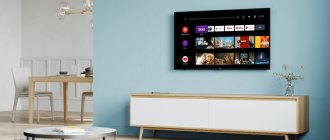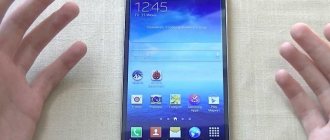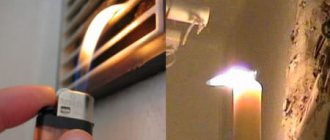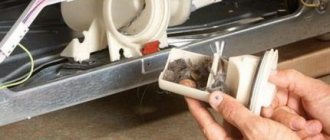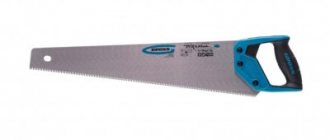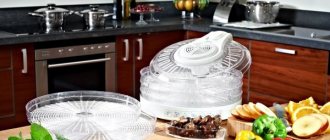Despite the incredible popularity of modern television equipment, which amazes with its technical capabilities, display sizes and picture quality, traditional projectors remain a very useful tool.
Many business conferences, seminars, lectures and other important events cannot do without them. In order for the image to be transmitted accurately and efficiently, you need to pay due attention to finding a good screen, the cost of which is sometimes prohibitive. Fortunately, there are many ways and instructions on how to make a projection screen with your own hands, so anyone can save money and do without large financial expenses.
A projector screen is the main element of a home theater
Projectors are often purchased for home theaters. They play videos with improved quality. The fan makes virtually no noise, and the ability to reproduce computer images makes them an indispensable device for everyday purposes and family movie watching.
If you have bought a projector for your home, then the next question that should concern you is purchasing a canvas . Its cost is very high, so you can try to make it yourself. It is important to understand that the main task of the canvas is to display the image in a high-quality manner.
Considering the interior properties of your room, you can use stretched or rolled fabrics . By the way, roll ones significantly save free space, so they are especially popular. They are also great for different interiors and display images with the most accurate color reproduction without distorting the picture. The presence of a special mechanism prevents damage to the fabric due to uniform tension and neat folding.
Tripod-mounted screens are not always effective and can be difficult to use in tight spaces. The screen on a tripod can easily be damaged during transportation. It can also be spread by a pet or child.
What to make a projector screen from?
To make projector screens yourself, the following materials are usually used (we list them along with their advantages and disadvantages):
- Raincoat fabric . A good option. Not afraid of moisture, hand touch, tobacco smoke.
- Thick canvas . Thick fabric is used, for example, new white sheets. To improve reflectivity, the fabric can be additionally painted with white paint. You can also make an opaque reflective backing, for example, from thick black polyethylene.
- Vinyl . One of the best options in terms of display quality, however, some problems are possible. The price of vinyl is quite high, you will have to look for a roll of a suitable width, and most importantly, when working with it you need to be extremely careful so as not to tear or stretch the material. In addition, the surface of the final product will also be very sensitive.
- Stretch ceiling . If you have the skill to install French ceilings, this may be your option. You just need to choose the right fabric. Stretch it onto a frame made from a branded profile - and a great screen is ready!
- Banner fabric . One of the most popular options. It is highly durable (after all, the material is intended for outdoor advertising, exposure to frost, direct sunlight and wind). Has a good reflectance. Banner rolls on the market have a wide range of sizes, which will allow you to easily select the fabric of the desired width.
- Fibreboard/cardboard . A good option at the very last limit of cheapness, on the verge of losing the properties of the screen. The final product will not be waterproof, durable or impressive, but will perform its function quite well.
- Drywall . Another popular option. The material is very easy to process, but fragile and relatively heavy. It is almost impossible to level out a deformed area if it appears. Simply cut out a rectangle of the desired size and paint it with matte white paint.
- Paint on a specially prepared area of the wall . One of the simplest options. Pros: making such a screen is simple, quick and cheap. In addition, such a screen will never fall. Cons - it cannot be moved if the need arises.
To summarize, we see that there are only two approaches: painting a section of wall/plasterboard or using some kind of sheet material, which is usually stretched over a removable frame.
Choosing a quality fabric
As mentioned above, the quality of the canvas is the main characteristic of a projector screen. The implementation of two important points depends on it:
- High-quality picture transmission.
- Correct distribution of light towards the viewer.
When choosing, you need to take into account the characteristics of the room, viewing angle, and placement of the projector on the ceiling or table. Don’t forget to pay attention to the lighting in the room, as well as the brightness of the projector.
It's all about the size
If you intend to build a projector screen with your own hands from a banner or special fabric, do not forget to carry out a series of calculations to select the appropriate dimensions and correctly determine other characteristics, such as the placement of seats and room design. The canvas is placed directly in front of the audience, but not in front of the projector itself. In this case, the event will be accompanied by a high-quality computer presentation, which will be available to every viewer.
If you have to use a wall-mounted screen for the projector, its height should be 1/6 of the distance between the canvas and the last row of spectators .
In this case, the text will be readable and clear. Ideally, the feature is provided that the first row of spectators is placed at a distance of two canvas heights. Such a gap is considered the minimum from which it is comfortable to read the information offered. The lower area of the canvas is placed at a height of 1.2 meters from the floor. If you take this feature into account, viewers from the last row will be able to notice all the data and not miss anything important.
What to make a projector screen from?
To make projector screens yourself, the following materials are usually used (we list them along with their advantages and disadvantages):
- Raincoat fabric . A good option. Not afraid of moisture, hand touch, tobacco smoke.
- Thick canvas . Thick fabric is used, for example, new white sheets. To improve reflectivity, the fabric can be additionally painted with white paint. You can also make an opaque reflective backing, for example, from thick black polyethylene.
- Vinyl . One of the best options in terms of display quality, however, some problems are possible. The price of vinyl is quite high, you will have to look for a roll of a suitable width, and most importantly, when working with it you need to be extremely careful so as not to tear or stretch the material. In addition, the surface of the final product will also be very sensitive.
- Stretch ceiling . If you have the skill to install French ceilings, this may be your option. You just need to choose the right fabric. Stretch it onto a frame made from a branded profile - and a great screen is ready!
- Banner fabric . One of the most popular options. It is highly durable (after all, the material is intended for outdoor advertising, exposure to frost, direct sunlight and wind). Has a good reflectance. Banner rolls on the market have a wide range of sizes, which will allow you to easily select the fabric of the desired width.
- Fibreboard/cardboard . A good option at the very last limit of cheapness, on the verge of losing the properties of the screen. The final product will not be waterproof, durable or impressive, but will perform its function quite well.
- Drywall . Another popular option. The material is very easy to process, but fragile and relatively heavy. It is almost impossible to level out a deformed area if it appears. Simply cut out a rectangle of the desired size and paint it with matte white paint.
- Paint on a specially prepared area of the wall . One of the simplest options. Pros: making such a screen is simple, quick and cheap. In addition, such a screen will never fall. Cons - it cannot be moved if the need arises.
To summarize, we see that there are only two approaches: painting a section of wall/plasterboard or using some kind of sheet material, which is usually stretched over a removable frame.
Installation Rules
The quality of the image will depend on how correctly the projection equipment is installed. There are only two important tasks that need to be solved :
- Choose the location of the canvas.
- Select image size.
When choosing the appropriate location for your projector and screen, be sure to consider the room size, layout, and personal preferences. Also, the choice may depend on the width and height of the canvas, the location of the outlet, the distance to the devices and other subtleties.
Projectors are installed in several positions:
- In front of the screen on the table.
- In front of the screen on the ceiling.
- Behind on the table.
- Behind on the ceiling.
To adjust the equipment, use a special remote control or push-button control of projectors . And if your homemade screen is made exactly to the established requirements, it will be as easy to operate as a shop canvas.
The second point of installation of the projector and the accompanying unit - the screen, depends on the size of the picture that will be shown on the homemade monitor. The width and height are determined by the distance between the screen and the projector, the video signal format and magnification. It is important to place the equipment on a flat horizontal surface so that the beam falls strictly perpendicular to the center of the canvas.
If these steps are completed correctly, you can begin connecting the projector. It's no secret that on its back there are a large number of different connectors. In most cases, users connect the computer to the device through the same input. True, if you need to show video rather than slides, you will most likely have to change the base connector to another. Typically this is HDMI capable of playing audio files.
Alternative solutions
If you can’t go to a hardware store to buy a PVC sheet, you can make do with alternative options. According to users, instead of a screen you can use:
- Clean apartment wall. It is important that the surface on top is not used. Perhaps there is a white door, cabinet or refrigerator in the house. They are also quite suitable.
- Often people project a picture onto a white ceiling. In this case, you will have to increase the number of pillows that will be laid on the floor. You will also have to fix the projector not in a horizontal position, but in a vertical one.
- Large flip calendars, which are turned to the audience with the white side, are often used as a screen. A good solution could be a white shelf from a closet or chest of drawers, which is placed on a stool and leans against the wall. The picture may not be accurate if projected onto a white Roman shade or light-colored curtain.
That's all, now you know what the features of projection equipment are and how to make a canvas for a projector with your own hands.
Originally posted 2017-12-21 06:22:24.
DIY projector screen
Due to the fact that a screen for an industrially produced projector often has a high cost, home movie-watching enthusiasts make the screen with their own hands. It is possible to create a screen for a projector even with an electric drive. To create it yourself you need:
- Select the material (fabric, cardboard or plasterboard, fiberboard or PVC).
- Prepare the wall if a frame frame will not be used.
- Marking the surface for the screen (or marking the material).
- Creating and securing a frame - a screen frame made of metal or wood.
- Stretching the fabric or securing the screen material.
- Aesthetic design.
If you choose the option of painting the wall under the projector, then the steps will be as follows:
- Preparing the wall
. For the projector screen you need a perfectly flat wall, covered with several layers of plaster. Uniformity must be checked with a level. Then be sure to cover everything with a layer of primer. - Wall marking for the screen
. The best assistant in marking will be a projector. A picture of the required format and size is displayed on the wall, then the markings are applied with a pencil or special dry ink. - Painting a wall for a projector screen
. Painting is carried out strictly from top to bottom, it is best to do this using a roller or spray console.
https://youtube.com/watch?v=FYCXdp7nAj4%250D
Projector Screen Paint
By painting the leveled surface of the wall, a projection screen is made directly on the wall. Paint is chosen in standard colors: white (the most popular), gray and even black. The paint color is selected in accordance with the characteristics of the projector and the viewing and color scheme of the room itself. For painting, ordinary water-based paint is used; it gives a smooth matte surface. The matte finish is also provided by special car paint. The best option would be reflective acrylic paint.
https://youtube.com/watch?v=slenG_a1Bjk%250D
